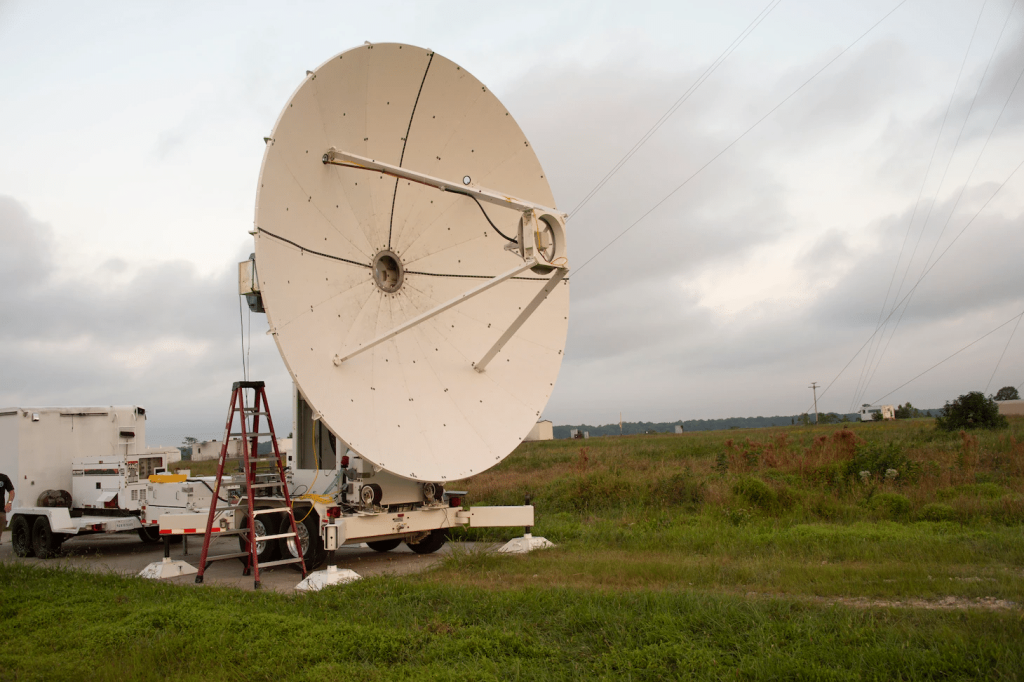
The microwave power transmitter was able to send 1.6 kilowatts through the air at a distance of one kilometer
The engineers responsible for the Scope-M project already see themselves transmitting solar energy to Earth directly from space. While waiting for this potential feat a little further away, they were able to transmit 1.6 kilowatts of power through the air over one kilometer.
The project was conducted by a team from the United States Army Naval Research Laboratory, and the results were published in IEEE Microwave Magazine. The goal that the Pentagon gave them was the following: to transmit 1 kilowatt of energy over a distance of 1 kilometer by means of a microwave beam. The researchers claim that the experiment succeeded beyond their expectations, measuring a peak power of 1.6 kW, or 60% more than the target. The team presents this achievement as “ The largest practical demonstration of power transmission in nearly 50 years “, according to statment American Navy.
The project is called Safe and Continuous Power bEaming – Microwave, or SCOPE-M. It is based on a very far from new principle: the conversion of electromagnetic waves into direct current using antennas called “rectinas”. Recently, Several projects It relates to the use of waves to transmit electricity. The US Navy also specifies that an experiment of the same size was conducted in the 1970s. By setting this goal, we’ve bypassed all but one of the demos, which dates back to 1975, with a gigantic dish located in California at NASA’s Goldzone facilities and with a much larger transceiver than we used here. So we were able to get close to that record using a much smaller transmitter, a much smaller receiver, and a more reasonable wavelength. Explains Paul Jaffe, one of the researchers involved in the project.
Scientists have already chosen to use a wavelength of 10 gigahertz. This belongs to the “microwave” window, which has many advantages in this type of setting. ” You don’t want to use a very high frequency because it can start to lose strength in the atmosphere Christopher Rudenbeck, principal investigator, explains. ” 10GHz is a great option because the component technology is cheap and mature. Even in heavy rain, the power loss is less than 5% “.It also has the advantage of complying with international safety standards.” As engineers, we develop systems that will not go beyond these safety limits Paul Jaffe says. ” This means that it is safe for birds, animals and humans “.
Transfer of energy to Earth from orbital stations?
This “wireless transmission” of electricity is operated as follows. The electricity is transferred to microwaves, which are then focused via a narrow beam onto a receiver. This receiver consists of so-called retina elements, which convert the waves back into direct current. “ SCOPE-M consists of tens of thousands of X-band antennas (Note: a range of frequencies in the microwave radio region of the electromagnetic spectrum). Each of these antennas is connected to a small rectifier diode that converts incident microwave energy into direct electrical energy ‘, explained the researchers.
The beam was tested at two different locations, in Maryland and Massachusetts, at the Massachusetts Institute of Technology. Scientists say the technology could one day be used to transmit power to Earth or from large tropical solar power plants to supply electricity to national grids 24 hours a day, 365 days a year. However, the most immediate application would be to transfer power directly to troops in the field, eliminating the need for vulnerable fuel shipments.
source : IEEE Microwave Magazine

“Incurable web evangelist. Hipster-friendly gamer. Award-winning entrepreneur. Falls down a lot.”

